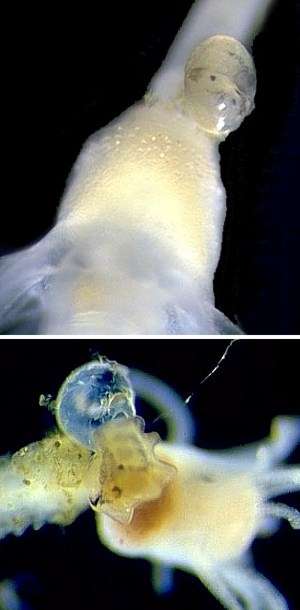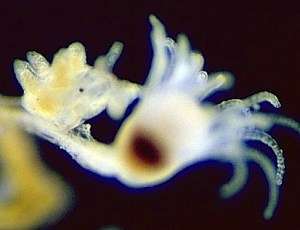

Flabellina amabilis
Larval metamorphosis
RELATED TOPIC
This remarkable sequence of photos has been provided by Dr Yoshi Hirano, Kominato Marine Laboratory, Chiba University, Japan. They show the metamorphosis of the planktonic veliger larvae from soon after settlement until it becomes a shell-less benthic slug. (The black spots in each animal are the eyes).
UPPER PHOTO: Recently settled shelled veliger adhering to the hydranth of the hydroid Eudendrium boreale. (Shell approx 400 microns long)
MIDDLE PHOTO: Larva has just cast shell. The lateral buds will develop into the first cerata. (approximately 400 microns long).
LOWER PHOTO: Juvenile slug with fully developed cerata (with a digestive gland duct), and rhinophores. Feeding on hydroid polyp. (Length aprox 1mm).
Reference: Hirano, Y.J. (1996). On the pediveligers of Flabellina athadona and Flabellina amabilis (Nudibranchia: Aeolidacea). Venus (Japanese Journal of Malacology), 55(1): 69-73.
Authorship detailsHirano, Y.J., 1999 (June 21) Flabellina amabilis Larval metamorphosis. [In] Sea Slug Forum. Australian Museum, Sydney. Available from http://www.seaslugforum.net/factsheet/flabama2
